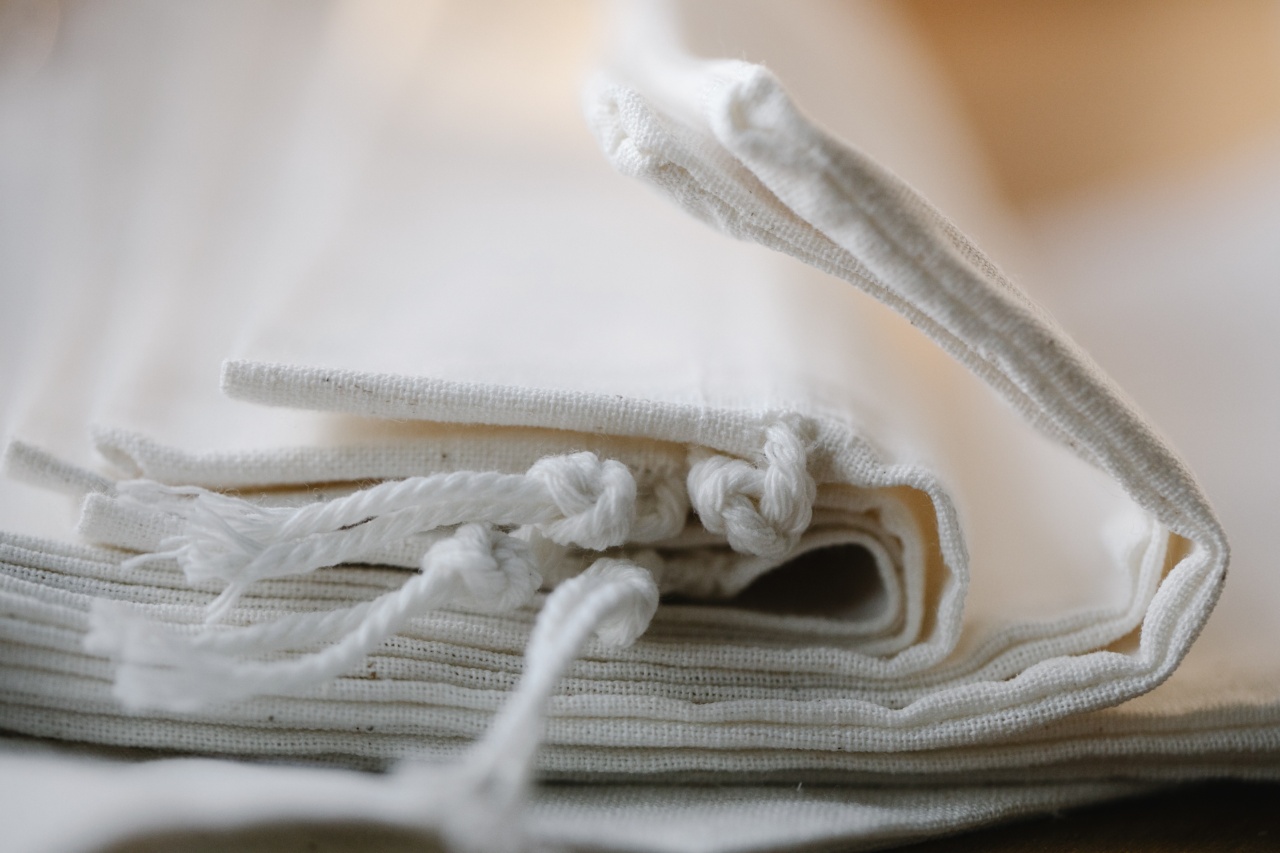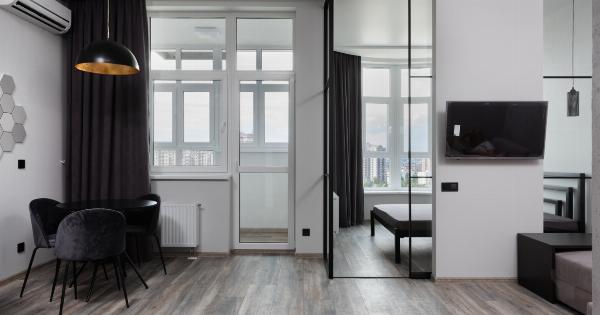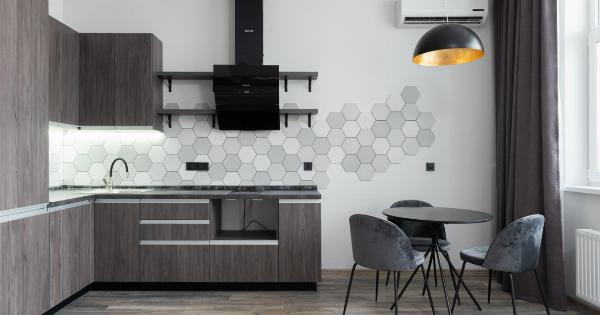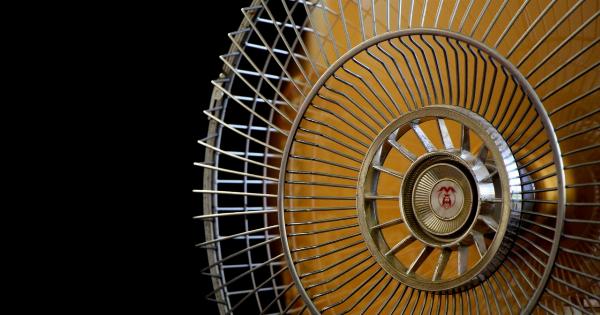High humidity levels in your home can be quite uncomfortable. Not only does it make the air stuffy, but also it creates a breeding ground for mold and mildew.
Furthermore, high humidity levels can aggravate respiratory problems for individuals with asthma or allergy problems. Here are 30 easy ways to reduce humidity levels in your home and make your indoor environment more comfortable.
1. Use Dehumidifiers
A dehumidifier is an appliance that reduces indoor humidity by extracting moisture from the air. It works by refrigerating the air, which condenses the moisture into a removable collection container.
You can buy a portable dehumidifier that you can move from room to room or a whole-house dehumidifier that integrates with your HVAC system.
2. Turn on the Exhaust Fan
Running the exhaust fan in your bathroom or kitchen can help get rid of the moisture and steam produced when you take a shower or cook.
Leaving it on for about 30 minutes after you are done can help remove any excess moisture that may be lingering around.
3. Use a Fan
Another easy way to reduce humidity levels in your home is by simply using a fan. Fans help circulate the air in your home, which can help evaporate moisture, making your home feel more comfortable.
Ceiling fans are especially useful in this situation since they create a gentle breeze that can complement the dehumidifier and exhaust fan.
4. Don’t Hang Clothes Indoors
Hanging clothes to dry indoors can add a considerable amount of moisture to the air, contributing to high indoor humidity levels. Instead, hang clothes outdoors to dry or use a dryer inside a well-ventilated area.
5. Fix Leaks
Check for any water leaks or condensation problems and fix them as soon as possible. Water leaks are a significant contributor to indoor humidity levels and can create the perfect breeding ground for mold and mildew.
6. Ventilate Your Home
Open windows and doors to allow fresh air to circulate and get rid of any stale air in your home. This simple technique can help reduce indoor humidity levels and also improve the overall indoor air quality in your home.
7. Use Air Conditioning
Air conditioning is a great way to reduce indoor humidity levels, especially during hot and muggy weather. Air conditioners work by removing the moisture in the air, leaving your home feeling more comfortable and cooler.
8. Use Plants
Indoor plants are not only great for decoration, but they can also help reduce indoor humidity levels. Plants absorb moisture from the air and release it into the environment, creating a natural way to dehumidify your home.
9. Purchase Moisture Absorbers
Moisture absorbers are another easy way to reduce indoor humidity levels. They come in various forms, such as silica gel packets, clay, or charcoal, and help absorb excess moisture from the air.
Simply place them around your home, and they will work naturally to reduce humidity levels.
10. Install a Vapor Barrier
A vapor barrier helps to reduce indoor humidity levels by preventing moisture from penetrating your walls and floors. It is a durable plastic or foil sheeting material that is installed under your floor or in your walls.
Vapor barriers are great for preventing dampness and mold growth in basement areas where moisture levels are typically high.
11. Use Salt Lamps
Salt lamps are not just stylish but also help reduce indoor humidity levels. They work by absorbing moisture from the air in your home, leaving it feeling more comfortable.
Additionally, salt lamps can also improve the overall indoor air quality and reduce the symptoms of respiratory problems such as asthma and allergies.
12. Fix Roof Leaks
Roof leaks are a significant contributor to indoor humidity levels. When left unrepaired, they can cause water damage and mold growth, which can wreak havoc on your health and home.
If you notice any roof leaks, address them immediately to reduce indoor humidity levels.
13. Cover Pools and Hot Tubs
Pools and hot tubs produce a significant amount of moisture, which can contribute to high indoor humidity levels. Consider covering them when not in use to reduce moisture levels in your home.
14. Use a Sump Pump
If you have a basement or crawlspace, a sump pump is an essential tool for preventing water damage and reducing indoor humidity levels. A sump pump helps collect excess water and pumps it out of your home, preventing any moisture buildup.
15. Dry Wet Materials Immediately
If you spill water on the carpet or any other surface in your home, dry it immediately to prevent mold growth and reduce indoor humidity levels.
16. Check Your Gutters
Ensure your gutters are not clogged, resulting in water overflow and near your home’s foundation. Water near the foundation leads to dampness, causing indoor humidity levels to increase.
17. Keep Doors and Windows Closed During Humid Weather
During humid weather conditions, outdoor air contains a lot of moisture, contributing to indoor humidity levels. Keep your doors and windows closed during this time to avoid increased indoor humidity levels.
18. Seal Windows
If you notice moisture or condensation near your window sills, that’s a sign of a draft. Ensure you seal your windows correctly to prevent outside moisture from getting in your home.
19. Keep Indoor Temperature Constant
Temperature variations cause condensation, a significant contributor to indoor humidity levels. Keep the heating system on during winter and the air conditioning system on during summer. A constant indoor temperature minimizes indoor humidity levels.
20. Add Charcoal in Your Closets
Charcoal is an effective moisture-absorbing ingredient that you can add to your closets to prevent clothes from getting musty or moldy, which leads to high indoor humidity levels.
21. Use a Humidistat
A humidistat is a device that measures indoor humidity levels. You can use it to regulate your HVAC system’s humidity settings and reduce indoor humidity levels accordingly.
22. Use Portable Fans
Supplement your ceiling fans with portable fans. Position them in damp zones or stagnant spaces in your home to create airflow and reduce indoor humidity levels.
23. Clean Your Air Conditioner
A dirty filter for your HVAC system severely impacts indoor humidity levels, increasing condensation. Wipe and clean your air conditioner filter and coils regularly to maintain low humidity levels and great indoor air quality.
24. Use Saltwater
Dilute one or two cups of salt in a bucket of water. Wet a cloth and use it to wipe down surfaces in your home to remove excess moisture in the air.
25. Insulate Your Walls
Insulation helps retain heat, and it also helps keep moisture out, reducing indoor humidity levels. Ensure your exterior walls have adequate insulation to minimize indoor humidity levels.
26. Buy an Air Purifier
Air purifiers capture pollutants, allergens, and dust particles from the air, leaving it feeling fresher and cleaner. Air purifiers are great for individuals with respiratory problems and allergies who need clean, fresh air to breathe.
27. De-clutter Your Home
Clutter traps dust and restricts airflow, leading to increased indoor humidity levels. The less clutter you have around, the easier it is to clean, allowing for better airflow and reduced indoor humidity.
28. Use Charcoal in Your Fridge
Charcoal is a natural odor absorber and moisture absorber. Adding charcoal to your fridge helps to remove excess moisture from the fridge reducing indoor humidity levels and keeps vegetables fresh.
29. Avoid Over-Watering Plants
Over-watering plants produces moist soil, contributing to high indoor humidity levels. Ensure your plants have the required amount of water, and do not overwater them.
30. Install Proper Ventilation
For homes with too little ventilation or none at all, ventilation solutions are essential for removing excess moisture. Install ventilation fans in your home to reduce indoor humidity levels and maintain air quality.






















